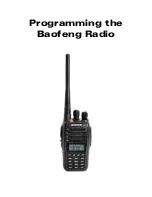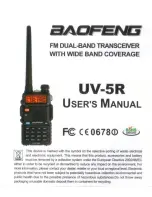
Wireless Charging
www.semtech.com
4 of 17
User Guide
Rev 1.03
TSDMRX-19V20W-EVM Semtech
Standard Use
The TSDMRX-19V20W-EVM is very easy to use. Start by applying power to the TSDMTX-19V2-EVM transmitter. A
few times each second, the transmitter emits a ‘ping’ of energy in search of a compliant receiver in range - in this
document, the TSDMRX-19V20W-EVM.
Place the TSDMRX-19V20W-EVM over the target area of the transmitter EVM. The TSDMRX-19V20W-EVM is
initially powered by the ping sufficiently to be able to announce its presence to the transmitter, and a transaction
begins. The transmitter next provides a small amount of power to the newly discovered receiver, so the TSDMRX-
19V20W-EVM can tell the transmitter what its power requirements are.
At the completion of this handshake, the transmitter begins providing the requested power, indicated by a green
LED on the receiver EVM. During power transfer, the TSDMRX-19V20W-EVM continuously communicates with the
transmitter, actively directing the process. In this way, it is assured that power is only sent when and how it is
required by the receiver. If required by the load, the TSDMRX-19V20W-EVM can actively increase or decrease its
power request, and the transmitter will act accordingly. As such, equipment with complex charging requirements
can be precisely supported by the TSDMRX-19V20W-EVM and only the desired amount of power is provided. If at
any time an error is detected, transmission is halted. To restart, the TSDMRX-19V20W-EVM must be removed from
the range of the transmitter and returned to the target zone to start a new transaction.
The receiver EVM can deliver up to 20 watts of power at 19 volts to any load the user would like to experiment
with. For general experimentation, the optimal load to select would be a Programmable DC Electronic Load. A
‘load box’ can easily be set to draw a selected current or power at the turn of a knob, making them very flexible
and easy to use in observing power supply operation in general. If a load box is not available, a power resistor
decade box is nearly as convenient, as it can easily be set to any desired resistance to simulate a range of load
conditions. In either case, be sure the test load is rated for at least the amount of power being tested.
Run wires from the VOUT+ and - pins of the receiver EVM to the selected test load, as per the illustration below.
Once the load is added, the receiver EVM can be used to perform a variety of tests.
Note:
In-band communication between the RX and the TX is done using load modulation. At light loads a minimum
load is generated using R15, but that may not be enough to maintain optimal communication.
An external load of
100-200mA is necessary to prevent communication dropouts.




































